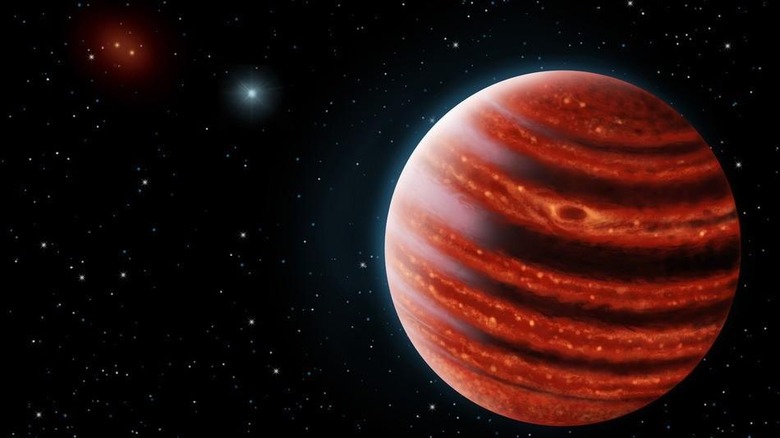Jupiter's twin is tiniest planet ever seen outside our Solar System
Using the Gemini Planet Imager, researchers have discovered a planet near the star 51 Eridani consistent in size and formation with our own Jupiter. This planet has been dubbed 51 Eridani b or "51 Eri b", and has a luminosity low enough to be consistent with the cold-start core accretion process that may have kickstarted Jupiter. At the same time, this planet's possible hot-start formation models indicate a planet with twice the mass of Jupiter. Jupiter is the largest planet in the solar system at 318 times the size of our Earth – imagine a planet twice that size.
The image you see above has been created in a very rudimentary way to demonstrate the size of the planet 51 Eri b within our own solar system. This planet is colored green here ONLY to make certain it's understood that this is NOT a planet that's normally pictured near Jupiter, a far more warm-colored planet. In fact this planet is far more likely a brighter red than Jupiter.

ABOVE: An artist's depiction of the "young Jupiter" exoplanet 51 Eridani b in near-infrared light. The planet twice the mass of Jupiter and is the smallest exoplanet yet seen using direct-imaging techniques. VIA: Danielle Futselaar & Franck Marchis, SETI Institute
This planet is around 96 light-years from Earth, and is the smallest exoplanet ever to be seen by a telescope here on Earth. An exoplanet is a planet that orbits any star other than our Sun.
This planet was detected using thermal emissions. Detecting "young extrasolar planets" in this way, according to the study, allows for scientists to gather information on atmospheric composition as well as luminosity. Near-infrared observations of this planet suggest strong methane and water vapor absorption in the planet's atmosphere.
This planet's atmosphere is hot compared to Earth's – not a place where we'd end up heading to live. At between 600 and 750 K, this planet's atmosphere is around 620-degrees Fahrenheit (aproximately 326.85-degrees Celsius.)
You can learn more in the study "Discovery and spectroscopy of the young Jovian planet 51 Eri b with the Gemini Planet Imager" by authors B. Macintosh et all, as published by journal Science under code DOI: 10.1126/science.aac5891.
